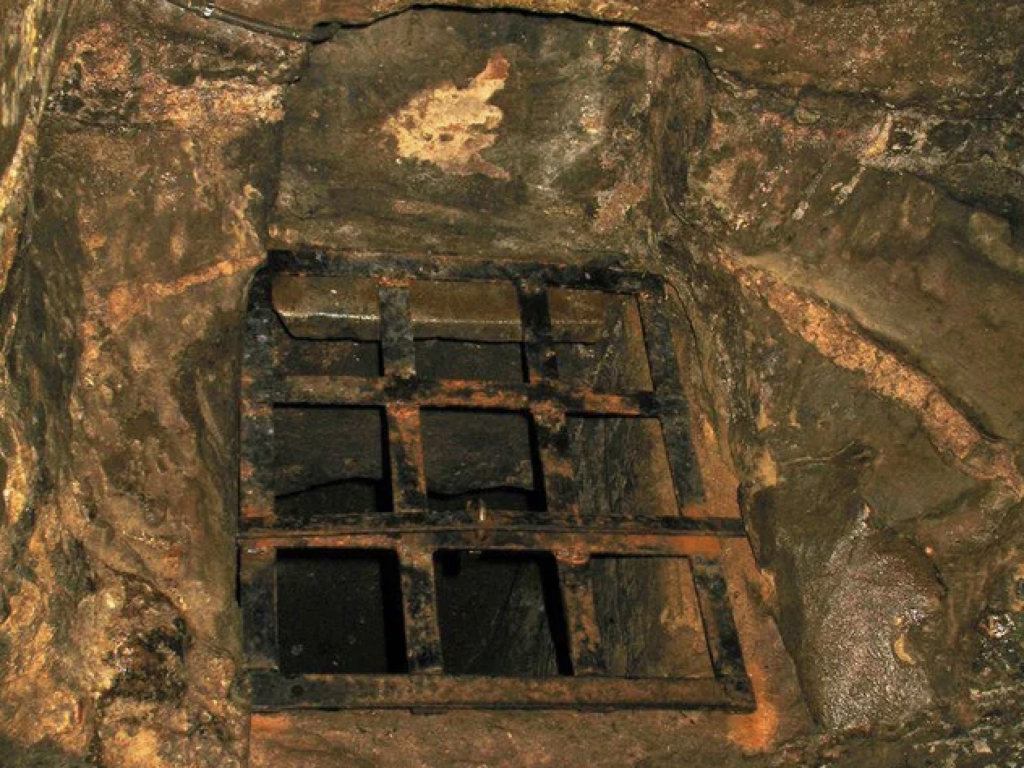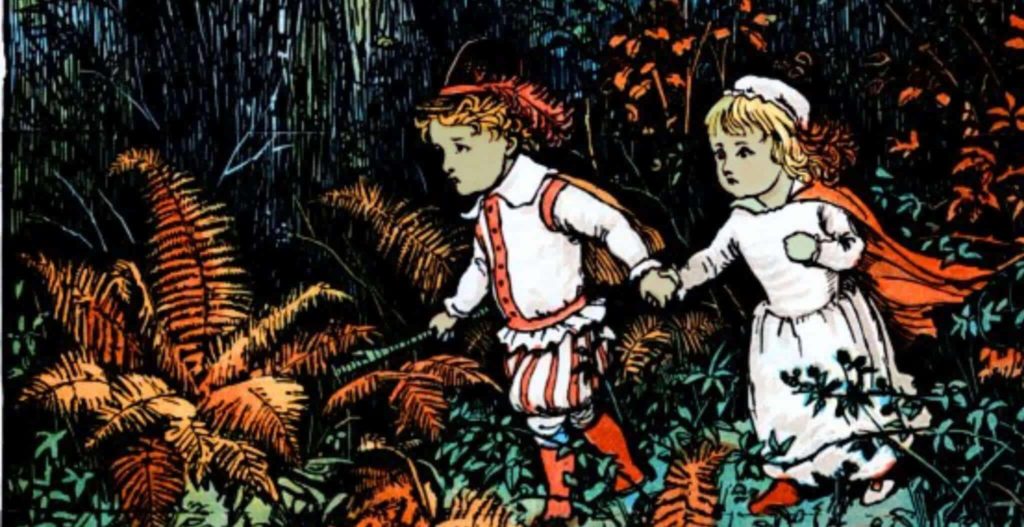Last updated on January 25th, 2023 at 04:24 am
When one thinks of the Middle Ages, they are often confronted by a dour landscape of peasant drudgery punctuated by the occasional castle or small town.
In many instances, knights or lords inhabited these castles and acted in an autocratic manner outside the boundaries of what we would view as traditional law and order today. And indeed, this was often the case for large stretches of the medieval past.
Moreover, even where strong state structures existed, the law courts often employed terror against the people on behalf of the monarch.
For instance, if they accused you of witchcraft, they could use many brutal methods to extract a confession. Or, if they deem that you committed treason, you could be subjected to terrible punishments and murdered in some very horrific ways.
But perhaps the most horrendous punishment meted out to supposed offenders centuries ago was confinement within the dreaded oubliette, a dark and sinister type of prison.

What is an Oubliette?
The term oubliette is French in origin and comes from the French verb, oublier, meaning ‘to forget.’ The oubliette was given this name as it was effectively a type of dungeon with zero light entering it, enterable only through a trap door in the roof, and they throw the poor victim in to be forgotten.
Because of the shape of these prisons, they are often also known as bottle dungeons.
People built oubliettes as narrow pits in which the prisoner had little room to do anything but sit there and contemplate the horrendous situation they had found themselves in.
Sometimes lords would starve the victim, or, perhaps if they were unlucky given the circumstances, they would have just enough food and drink thrown down to them to survive dreadfully.
This was doubtlessly worse than a swift end as the victim was kept alive for months or even years in the dark, losing one’s sanity.
Unlike the stereotypical image of a dungeon as being located in the basement of a castle or building, the oubliettes were sometimes built into the walls of the upper floors of such establishments.
This was, so victims were surrounded by the noise and signs of life around them as they slowly expired.
When they did die, the deceased’s corpse was sometimes left to rot there. This would attract vermin, and the presence of rats and a half-devoured and rotting body would act as a brutal addition to the terror inspired by the oubliette when its next victim arrived.
As a result, many examples of oubliettes have been discovered with the skeletal remains of an assortment of victims whose bones were never removed from them.
Why were Oubliettes used?
One might ask, who ended up in such places and what crime had they committed to deserve such a sinister method of torture? This needs to be explored by assessing when most oubliettes date to.
While there are examples of their use throughout the Middle Ages and into early modern times, a period stretching to over a millennium, oubliettes were most prevalent during the High Middle Ages and Late Middle Ages between about 1100 AD and 1500 AD.
For instance, the famous Bastille Prison in Paris appears to have had an oubliette.
At the same time, there are many examples of oubliettes in castles located across the English and Irish countryside from these centuries.
What was striking about all three regions during the High and Late Middle Ages was how the country split between competing feudal lords.
Often, these would capture regional rivals or their retainers. It seems likely that the oubliettes were used to inspire terror in one’s enemies in this fractious political environment.
A good example is Warwick Castle in Warwickshire in the English Midlands.
This castle was first built at the behest of William the Conqueror in 1068, and an oubliette was installed, one which was so narrow that the victim had to remain lying in a prone position, unable to stand up.
Such oubliettes were doubtlessly being used against the Normans’ political enemies in the newly conquered England at a time when invaders from northern France were effectively imposing themselves as a conquering class across England.
How Often were Oubliettes Used?
While there is no doubt that oubliettes existed and were used during medieval times, such as the horror that they inspire, there has been a tendency to exaggerate the degree to which they proliferated across medieval and early modern Europe.
For instance, some previously believed spaces have been versions of these awful dungeons in medieval Ireland have been identified as having been sewers that mirrored an oubliette in their appearance.
Others were latrines or even storage rooms. Studies have even proposed that the alleged oubliette in the Bastille Prison in Paris was a room for storing ice in an age before refrigeration.
The cool temperatures found underground could be employed to keep water frozen. Moreover, the term oubliette didn’t even come into usage until the eighteenth century, when it first emerged as a literary device.
Such is found in the works of French writers such as Victor Hugo and Alexandre Dumas, who utilized oubliettes as a conceptual device for exploring forms of state and political terror in their writings and who also made them famous in the process.
Sources
Jody Ender, The Medieval Theatre of Cruelty: Rhetoric, Memory (Cornell, 2002); Guy Geltner, The Medieval Prison: A Social History (Princeton, 2014); Jonathan Kirsch, The Grand Inquisitor’s Manual: A History of Terror in the Name of God (New York, 2009); George Ryley Scott, The History of Torture Throughout the Ages (New York, 2003).
Thomas Johnson Westropp, ‘Carrigogunell Castle and the O’Briens of Pubble Brian in the County of Limerick, in The Journal of the Royal Society of Antiquaries of Ireland, Fifth Series, Vol. 38, No. 2 (June 1998), pp. 141–159.
Goran Blix, ‘The Prison House of Revolutionary Memory: The Politics of Oblivion in Michelet, Hugo and Dumas’, in French Forum, Vol. 32, No. 3 (Fall, 2007), pp. 39–64.


If oubliettes were pits, and often made intto walls, then wouldn’t narrow ones make it impossible for the prisoner to lie down or sit down? They were tall, the trap door high above?
I’ve seen documentaries on them, and at least some of them had sharp spikes in the bottom so that the prisoner died not long after being dropped down. If an oubliette was in a wall ona high floor, wouldn’t the walls themselves be the sides of the prison? Like being trapped in a wall that’s several levels high?
I am very curious to know what they were known as other than ‘bottle dungeons’ or ‘Oubliette’. Thank you for such an insightful and detailed article.
Sad that such evil tortures invented. Probably, as usual, the real criminals ie the super rich including Royalty, were not punished but the poorer people were.
So oubliette means ‘The Forgotten’. Seems like a lot of these places would be multipurpose, sewers, or latrines, and if there was an enemy or someone you needed murdered, you could simply stick them inside for safe keeping. Or if someone died and you didn’t want to pay for a funeral, or you murdered someone and wanted to dispose of the body, you could stick them in there too.